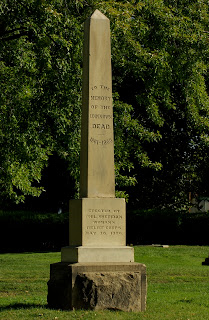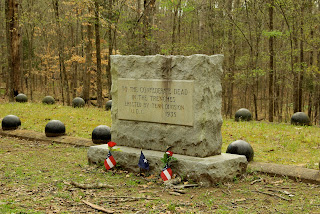The 125 Pennsylvania Volunteer Infantry was recruited in Blair, Huntingdon and Cambria Counties in response to President Lincoln’s call for 300,000 men July 1862. The regiment was organized and trained at Camp Curtin before mustering into federal service for 9 months at Harrisburg, PA., on August 16, 1862 and departing for Washington the same evening. By August 18th the new recruits were in Virginia, first at Hunter’s Chapel and then at Fort Bernard where they remained until September 6, 1862. On the 6th they marched to Rockville, MD were the regiment was brigaded with the 5th Connecticut, 10th Maine, 28th New York, 46th, 124 and 128th Pennsylvania and attached to the 1st Brigade, 1st Division, 12th Corp, Army of the Potomac, commanded by Major General Joseph K. F. Mansfield. The corp left Rockville on the 6th and headed west arriving east of Antietam Creek in western Maryland on September 16.
On the evening of September 16, 1862 the 125th Pennsylvania crossed Antietam Creek at fords near the upper bridge. They camped on George Line’s farm, east of the Smoketown Road and about a mile in the rear of Major General Joseph Hooker’s lines. At dawn the regiment moved out with the rest of the 12th Corp toward where Hooker’s troops were engaged with Confederate soldiers. The men deployed in Samuel Poffenbeger’s woods and marched in a southwesterly direction toward where the Smoketown Road intersects the Hagerstown Pike. After exiting the East Woods the regiment was fired on by the 5th Texas which resulted in the death of private James Hunter of Company A. The regiment continued their advance, finally ending up in the West Woods where they were hotly engaged and finally, after suffering heavy losses, forced to retreat.
As documented in History of the One Hundred Twenty-Fifth Pennsylvania Volunteers 1862-1863, published in 1906:
“In the retreat from the said west woods, the regimental colors of the 125th were saved through bravery worthy of special mention. The color-sergeant, George A. Simpson, was shot and instantly killed and five of the color guard went down; then
Eugene Boblitz, of Company " H," rescued and carried them for a distance, when he was badly wounded and handed them to Sergeant Walter W. Greenland, of Company "C," from whom Captain Wallace received them, and carried them to the rear of the battery which we were ordered to support. Meanwhile men were falling thick and fast as leaves in autumn.
Hospital Steward J. Fletcher Conrad, stated to the writer that when attending an encampment of the Grand Army of the Republic, a few years since, he met a Confederate officer, who detailed the circumstances of the carrying of the regimental
flag by Captain Wallace, and said that the Captain must have led a charmed life, as one hundred rifles were aimed at him without effect.”
Casualties for the 125th in their baptism of fire were heavy, 5 killed, 42 wounded and 17 missing. A number of the dead including Color Sergeant George Simpson are buried at Antietam National Cemetery.
On September 17, 1904 the 125th Pennsylvania Volunteers held a reunion at Antietam Battlefield and dedicated a monument to the regiment. This monument is west of and behind the Dunker Church. The granite monument, as described in Pennsylvania at Antietam published in 1906, “A Color Sergeant with his regimental flag partly unfurled to the breeze, with eagerness written in every line of his manly face and lithe body, with hand on the sword by his side, ready to spring forward at the command to lead his comrades anywhere and everywhere they are ordered to go” bears the likeness of Color Sergeant George A. Simpson.
125th Pennsylvania Volunteer Infantry Monument



































